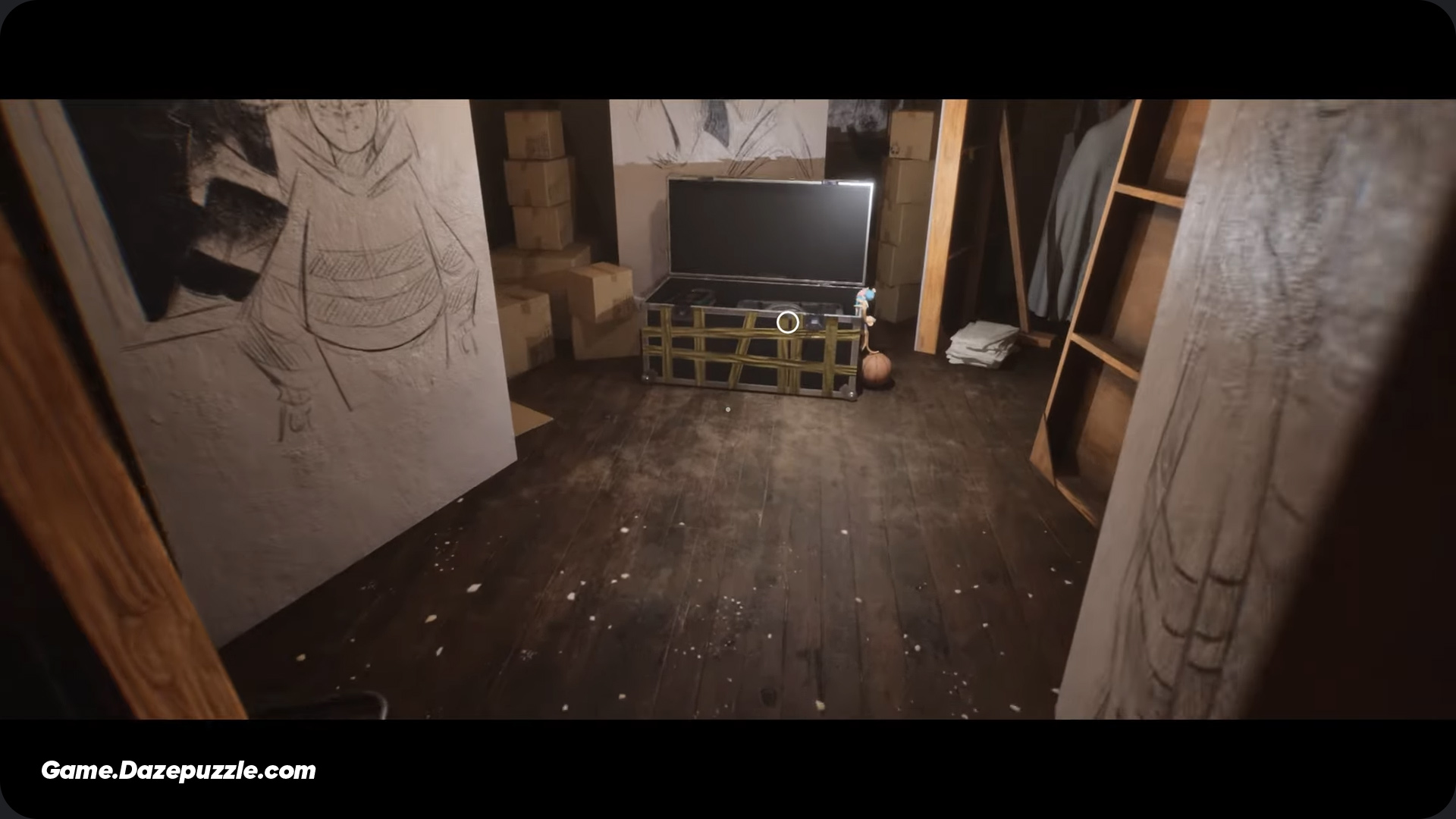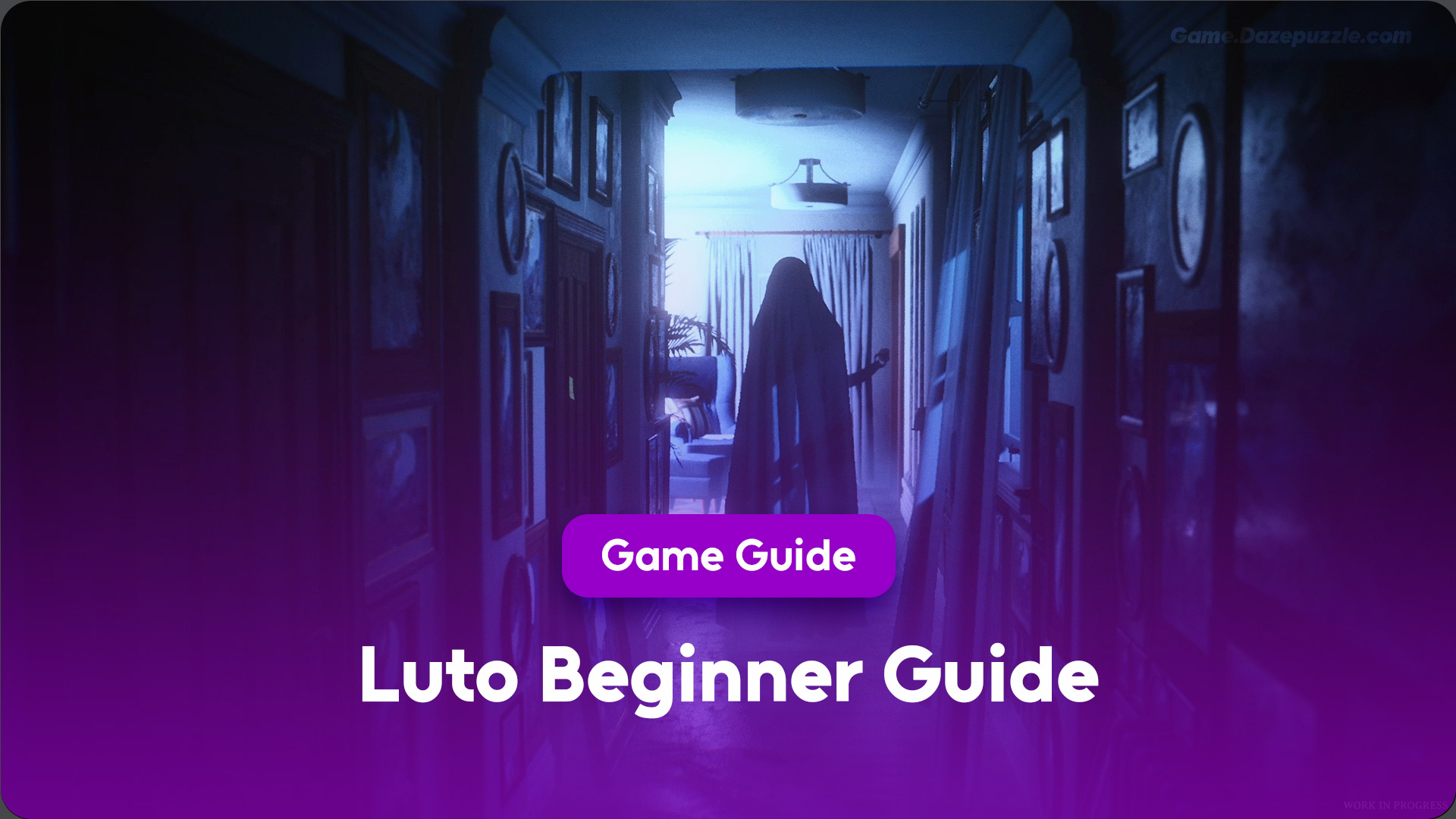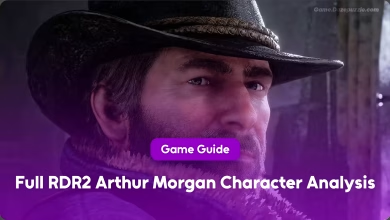Venturing into a new horror game often feels like stepping into the unknown, but with Luto, that feeling is the entire point. You’re not just exploring a haunted house; you’re trapped in a manifestation of grief, where the rooms shift like memories and the silence is heavier than any monster. If you’re just starting your journey and feeling a bit lost in its looping hallways, this Luto beginner guide is designed to be your anchor. We’ll skip the fluff and get straight to the practical advice you need to understand the game’s unique brand of fear, solve its cryptic puzzles, and maybe, just maybe, find a way out.
What Is in Our Luto Beginner Guide
First Things First: What Kind of Horror is Luto?
Forget about managing ammo or fighting off zombies. Luto is a first person psychological horror game that draws heavy inspiration from the legendary P.T. demo. Its core gameplay is built on atmosphere, exploration, and puzzle solving. The horror doesn’t come from jump scares (though there are a few well placed ones), but from a slow, creeping dread. The game masterfully explores themes of loss, anxiety, and depression, making the environment itself your primary antagonist.

The Narrator: Your Unreliable Guide
One of the first things you’ll notice is the clinical, detached narrator describing your actions. Your first instinct might be to turn him off in the settings don’t. This narrator isn’t just for flavor; he’s a core game mechanic. As you progress, his statements will become increasingly contradictory and unreliable, reflecting the main character’s fractured mental state. Figuring out when to trust him and when to question him is a meta puzzle in itself and a crucial part of the experience.
The Nature of Fear in Luto
Luto preys on common phobias like claustrophobia (fear of tight spaces) and monophobia (fear of being alone). It cleverly uses both extreme darkness and stark, sterile brightness to ensure you never feel safe. The tension is constant, created not by what you see in the shadows, but by the unsettling feeling that the very walls are watching you.
Pro Survival Tips Before You Start
Keep these essential tips in mind. They will save you a lot of frustration and make your playthrough much smoother.
- Search Everything (Seriously, No Chapter Select): This is the most important tip for Luto. The game has no chapter select feature. If you miss a collectible note or a key item, you’ll have to restart the entire game to get it. Take your time, explore every corner, and make sure you read every note you find from the menu to ensure it registers for achievements.
- Listen Closely: Sound is Your Best Friend (and Worst Enemy): Luto’s sound design is incredible. The subtle drip of a faucet, the static of a TV, or the ticking of a clock are all designed to build tension. Play with headphones for the best and most immersive experience.
- Your Sketchbook is the Key: Starting from the second chapter, Samuel’s sketchbook becomes vital. It’s not just a story item; it contains visual clues and notes essential for solving the main puzzles. Whenever you’re stuck, your sketchbook should be the first place you look.
- Patience is a Virtue: Luto is a slow burn game. Some of its puzzles are intentionally cryptic and may seem nonsensical at first. This is part of the design, meant to make you feel as lost and desperate as the character. Be patient and open to unconventional solutions.
- Use Manual Saves: Given the lack of a chapter select, get into the habit of saving manually, especially before entering a new area or tackling a complex puzzle. This can be a lifesaver if you realize you’ve missed something and don’t want to start over from scratch.
A Spoiler Light Walkthrough for the First Steps
This section will guide you through the initial chapters. We’ll provide hints first and direct solutions in tables, so you can decide how much help you need.

Chapter 1: It’s Happening Again
The goal of this introductory chapter is to familiarize you with the game’s loop mechanic and have you gather the first set of essential items. Your objective is to find the hidden hatch in the basement. You’ll cycle through a few days of the week, with the house changing slightly each time.
| Item Type | Item Name | Location |
|---|---|---|
| Note | Moving Progress | On the railing of the upstairs hallway. |
| Note | That Symbol Again… | On the desk in the basement. |
| Note | In Loving Memory… | In the trash can next to the telephone table. |
| Card | Casa = House | On the basement desk, next to the second note. |
| Item | Home Keys (1 of 2) | On the small table by the trash can. |
| Item | Sam’s Sketchbook | On Wednesday, on the floor by the stairs. |
| Item | Home Keys (2 of 2) | On Wednesday, next to the bathroom sink. |
After collecting these items and answering the phone on Thursday night, head to the basement. Move a piece of cardboard on the floor to reveal the hatch and end the chapter.
Chapter 2: Beyond the Noise
This chapter introduces much more complex, multi layered puzzles. You’ll need to use your sketchbook and pay close attention to environmental clues to find your way through a new, surreal version of the house.
| Puzzle | Key Clues & Items | Direct Solution |
|---|---|---|
| Getting the Hammer | The note on the ladder (“Ask for help”), the sticker by the phone (“Looking for help?”), and the bulletin board (“555 – F A D B”). You’ll need the sketchbook (pages 10-12) to decipher the letters. | The letters correspond to numbers from the sketchbook drawings: F=1, A=1, D=2, B=5. Dial 555-1125 on the phone and press the SOS button. The hammer will appear. |
| Opening the White Door | The seven clock symbols surrounding the locked door. | You must find and interact with seven hidden clocks throughout the area. Look carefully behind boxes, under tables, and inside the bathtub. Once all seven are found, the door will unlock. |
| Opening the Glass Door | The writing on the wall in the newly opened room: “A Lie Multiplies 7 Times.” This refers to “The Big Lie” drawing (A) in your sketchbook, which had a value of 1. | Multiply the value of A by 7 (1 * 7 = 7). Substitute this new value into the original phone code. Dial 555-1725 (F=1, A=7, D=2, B=5). The glass door will open. |
PC System Requirements
To ensure a smooth descent into madness, check if your rig meets these specs.
| Component | Minimum Requirements | Recommended Requirements |
|---|---|---|
| OS | Windows 10/11 64-bit | Windows 10/11 64-bit |
| Processor | Intel Core i5 4690 | AMD Ryzen 3 1200 | Intel Core i7 8700K | AMD Ryzen 5 3600 |
| Memory | 8 GB RAM | 16 GB RAM |
| Graphics | NVIDIA GTX 1060 6GB | AMD RX 580 | NVIDIA RTX 3060 | AMD RX 6600 XT |
| DirectX | Version 12 | Version 12 |
| Storage | 22 GB available space | 22 GB available space |
Final Thoughts: A Journey Worth Taking?
Luto is not your typical horror game. It’s a slow, atmospheric journey into the human psyche that rewards patience and keen observation. It successfully merges its terrifying atmosphere with a poignant and memorable narrative that will stick with you long after the credits roll. While its deliberate pace and ambiguous puzzles might not be for everyone, Luto is an essential and unforgettable experience for anyone who craves a deeper, more thought provoking brand of psychological horror.
Thanks for keeping up with Game.Dazepuzzle.com






